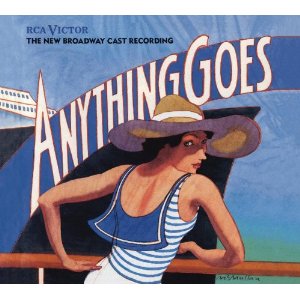SITE GUIDE
SEARCH
REVIEWS
REVIEW ARCHIVES
ADVERTISING AT CURTAINUP
FEATURES
NEWS
Etcetera and
Short Term Listings
LISTINGS
Broadway
Off-Broadway
NYC Restaurants
BOOKS and CDs
OTHER PLACES
Berkshires
London
California
New Jersey
DC
Philadelphia
Elsewhere
QUOTES
TKTS
PLAYWRIGHTS' ALBUMS
LETTERS TO EDITOR
FILM
LINKS
MISCELLANEOUS
Free Updates
Masthead
A CurtainUp Review
Hamlet
|
"The play’s the thing. Wherein I’ll catch the conscience of the king."— Hamlet
|
This scaled-down presentation, co-directed by Dominic Dromgoole and Bill Buckhurst, could hardly be accused of being swollen to elephantine proportions. Drawing on the Folio of 1623 and the touring Quarto of 1603 scenes have been cut, transposed, or omitted altogether.
Having seen my share of Hamlets over the years, I can vouch for the merits of shortened versions. At 4,024 lines, it ranks as Shakespeare’s longest work and theatergoers who watch a full uncut-text productio can expect to settle in for a 4-hour stretch.
The big question in Hamlet undoubtedly lies in the to-be-or-not-to-be speech. But the one closely following at its heels is whether the title actor is up to the formidable task of portraying the Dane. In this staging, the answer is mostly yes. The melancholy prince is performed by the young and attractive Michael Benz, who has the Shakespearean chops and can wrap his mouth around the famous soliloquies and set pieces. Where he comes short (and all actors playing Hamlets do, in one way or another) is in not fully exploring the play's “two Hamlets,” the brashy one we meet before he departs for England, and the more mellow one after he miraculously returns from his deadly sea adventure. Benz nails the first but doesn’t quite convey the gravitational weight of the more mature Hamlet of Acts 4 and 5.
Looking beyond the iconic role, the other parts are performed by a handful of very versatile actors (Peter Bray, Miranda Foster, Tom Lawrence, Carlyss Peter, Matthew Romain, Christopher Saul, and Dickon Tyrrell), doubling tripling, and even quadrupling roles. Though the multiple role-changing, tends to compromise the psychological depth of some key characters like Claudius and Gertrude, the actors compensate by their remarkable ingenuity as they shift from major to minor personages.
One could not wish for a better Elizabethan-styled rustic set design (Jonathan Fensom). It's practically structured for quicksilver scene changes, with the actors sometimes shifing props to appropriate the dramatic moment, or take parts of the set with them as they exit to clear the stage for a fight scene that requires more rushing and running about. The costumes (Jonathan Fensom again) are a blend of the Elizabethan and contemporary, bringing a refreshing modernity to the piece. And what flavorful music. The original score is by Laura Forrest-Hay, and the inventive arrangements by Bill Barclay, provide smooth scene transitions and bold accents to the action. It's all performed by the actors on an array of traditional and contemporary instruments.
This production doesn’t pull out all the tragic stops of the work, and yet it does urgently deliver the poignant myth of the young prince who never claimed the crown of Denmark. Moreover, it introduces us to the latest up-and comer to inhabit this iconic character. For as Oscar Wilde rightly observed about this play and its most famous role: “There are as many Hamlets as there are melancholies.
|
Hamlet by William Shakespeare Directed by Dominic Dromgoole and Bill Buckhurst Cast: Michael Benz (Hamlet), Peter Bray (Rosencrantz, Marcellus, Prince Fortinbras, Osric), Miranda Foster (Gertrude, Second Player, Player Queen, Second Gravedigger) Tom Lawrence (Horatio, Reynaldo, Captain), Carlyss Peer (Ophelia, Voltemand), Matthew Romain (Laertes, Bernardo, Guildenstern, Lucianus), Christopher Saul (Polonius, Francisco, Player, First Gravedigger, Priest) Dickon Tyrrell (Claudius, Ghost, First Player, Player King). Sets and Costumes: Jonathan Fenson Orignal Score: Laura Forrest-Hay Lighting: Paul Russell Fight Choreography: Sian Williams Compositions and Arrangements: Bill Barclay Fight Director: Kevin McCurdy Company Manager: Marion Marrs Shakespeare Globe’s traveling production at The Schimmel Center for the Arts at Pace University, 3 Spruce Street (between Park Row and Gold Street) To find all touring locations and booking information, visit www.shakespeareglobe.com Opening 10/02/12; closing 10/07/12. Opening night performance @ 6:30 pm. Tuesday through Saturday @7:30pm. Wednesday and Saturday matinees @ 2pm. Sunday matinee @ 3pm. Running time: 2 hours; 40 minutes including intermission. Reviewed by Deirdre Donovan based on press performance of 10/03/12 |
|
REVIEW FEEDBACK Highlight one of the responses below and click "copy" or"CTRL+C"
Paste the highlighted text into the subject line (CTRL+ V): Feel free to add detailed comments in the body of the email. . .also the names and emails of any friends to whom you'd like us to forward a copy of this review. Visit Curtainup's Blog Annex For a feed to reviews and features as they are posted add http://curtainupnewlinks.blogspot.com to your reader Curtainup at Facebook . . . Curtainup at Twitter Subscribe to our FREE email updates: E-mail: esommer@curtainup.comesommer@curtainup.com put SUBSCRIBE CURTAINUP EMAIL UPDATE in the subject line and your full name and email address in the body of the message. If you can spare a minute, tell us how you came to CurtainUp and from what part of the country. |

Slings & Arrows- view 1st episode free
 Anything Goes Cast Recording
Anything Goes Cast RecordingOur review of the show
 Book of Mormon -CD
Book of Mormon -CDOur review of the show

